Malaysia Football League: The Complete Guide to Liga Malaysia
The ball keeps rolling on the pitch—from narrow alleyways to grand stadiums—the passion for football in Malaysia has begun to leave its unique mark on the global football map. The Malaysian Football League (MFL) is the backbone of professional football in the country, evolving from humble beginnings to a modern league system that draws growing local and regional attention. It serves not only as a platform for domestic talent to flourish but also as a battleground where legacy clubs and rising contenders vie for national supremacy. This article explores the full structure, history, current trends, and future prospects of Liga Malaysia.

Malaysia Football League Structure and Format
The Malaysia Football League (MFL) system, a hierarchical pyramid for men’s football, organizes clubs across multiple tiers with promotion and relegation, fostering competition and development. Established in 2004 as a professional league, it evolved from amateur roots in the 19th century, with the Football Association of Malaysia (FAM) and MFL driving its modernization. The 2025–26 season reflects a dynamic structure, balancing elite performance with grassroots growth, per MFL and UEFA insights.
-
Top Tier: Malaysia Super League (MSL)
-
Comprises 14 professional clubs, with Johor Darul Ta’zim dominating (11 titles).
-
Operates on a double round-robin format, running August 2025 to April 2026, totaling 182 matches.
-
Champions qualify for the AFC Champions League; runners-up enter the AFC Cup.
-
Bottom two teams face relegation to the Malaysia A1 Semi-Pro League, paused in 2023.
-
Lower Tiers: A1, A2, and A3 Leagues
-
Malaysia A1 Semi-Pro League (second tier, 12 teams) promotes top two to MSL, relegates bottom two to A2.
-
Malaysia A2 Amateur League (third tier, 14 clubs) and A3 Community Leagues (fourth tier, state-based) support grassroots talent.
-
Promotion requires meeting financial and facility criteria, ensuring sustainability.
-
Reserve League for U23 players bridges youth to senior teams, per MFL 2023 reforms.
-
Cup Competitions and Youth Development
-
Malaysia Cup, FA Cup, and Piala Sumbangsih enhance competition, open to various tiers.
-
Piala Presiden (U21) and Piala Belia (U19) nurture young talent, vital for future stars.
-
Women’s National League, launched in 2023, mirrors the men’s structure, expanding opportunities.
-
MFL’s privatization since 2015 ensures financial stability, with RM70M in sponsorship, per 2016 data.
League Tiers and Promotion System
The Malaysian football league system is a structured pyramid fostering competition and talent growth across five tiers. Managed by the Malaysian Football League (MFL), it balances professional excellence with grassroots development, with promotion and relegation driving ambition.
Malaysia Super League (MSL)
The Malaysia Super League or otherwise known as the Liga Super Malaysia, is Malaysia’s top tier since 2004, featuring 14 professional clubs, including Johor Darul Ta’zim, with a double round-robin format from August 2025 to April 2026, per MFL. The champion qualifies for the AFC Champions League, runners-up for the AFC Cup. The bottom two teams face relegation to the Malaysia Premier League, though paused in 2023. With RM70M in sponsorship, per 2016 data, MSL’s competitive intensity draws growing viewership across Asia.
Malaysia Premier League
The Malaysia Premier League, the second tier, hosts 12 semi-professional clubs in 2025–26, competing in a double round-robin format, per MFL. The top two teams earn promotion to the MSL, while the bottom two are relegated to the M3 League. Clubs must meet financial and infrastructure criteria for promotion, ensuring sustainability. The league serves as a crucial bridge, nurturing talents for top-flight football and cup competitions like the Malaysia Cup.
Malaysia M3 League
The Malaysia M3 League, the third tier, comprises 14 amateur clubs in 2025–26, focusing on regional talent development, per MFL. Operating on a round-robin basis, the top two teams are promoted to the Premier League, while the bottom two drop to the M4 League. With limited funding, clubs rely on local support, fostering community engagement and producing players for higher tiers, as seen in recent youth call-ups.
Malaysia M4 League
The Malaysia M4 League, the fourth tier, is a state-based amateur competition with varying team counts in 2025–26, per MFL. Top performers, typically two per region, are promoted to the M3 League, with relegation to M5 depending on state rules. It emphasizes grassroots football, connecting local talent to national pathways, with clubs in Sabah and Sarawak strengthening regional football ecosystems.
Malaysia M5 League
The Malaysia M5 League, the fifth tier, is a community-driven amateur league with state-organized teams in 2025–26, per MFL. Top teams, often two per state, can ascend to the M4 League, with no formal relegation due to its grassroots nature. It fosters local participation, feeding talent into higher tiers and supporting MFL’s youth initiatives like Piala Belia, vital for Malaysia’s football future.
Season Format and Competition Schedule
The Malaysia Football League (MFL) delivers a vibrant season format, integrating competitive league play with prestigious cup competitions. The 2025–26 season, spanning August to April, features structured schedules across tiers, fostering intense rivalries and opportunities for glory, per MFL guidelines.
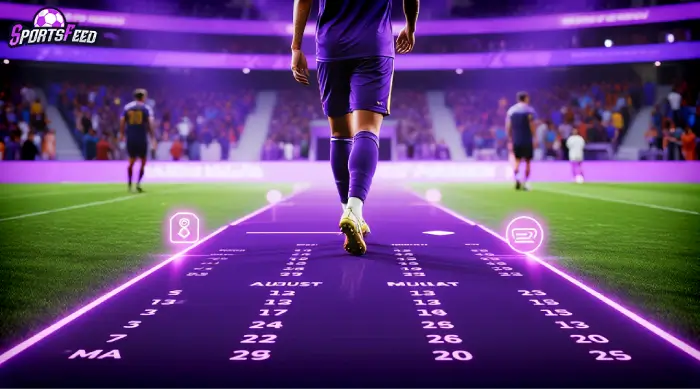
|
Competition |
Schedule |
Format |
Key Details |
|
Piala Sumbangsih |
August 2025 |
Single match |
MSL champion vs. Malaysia Cup winner |
|
Malaysia Super League |
Aug 2025–Apr 2026 |
Double round-robin, 182 matches |
14 teams, AFC qualifications |
|
Malaysia Premier League |
Aug 2025–Apr 2026 |
Double round-robin, 132 matches |
12 teams, promotion/relegation |
|
Malaysia Cup |
Sep–Nov 2025 |
Knockout, 16 teams |
MSL and Premier League teams |
|
FA Cup |
Mar–Jun 2026 |
Knockout, multi-tier |
Includes lower-tier clubs |
Malaysia Super League (MSL)
The MSL, Malaysia’s premier tier, comprises 14 professional clubs competing in a double round-robin format, totaling 182 matches from August 2025 to April 2026, per MFL. Each team plays 26 matches (13 home, 13 away), with the champion earning AFC Champions League qualification and runners-up entering the AFC Cup. Matches are primarily on weekends, with occasional midweek fixtures, kicking off with the Piala Sumbangsih charity shield in August.
Malaysia Premier League
The second-tier Malaysia Premier League hosts 12 semi-professional clubs in 2025–26, playing 132 matches in a double round-robin format from August to April, per MFL. The top two teams secure promotion to the MSL, while the bottom two face relegation to the M3 League. Weekend-heavy schedules, aligned with MSL, are broadcast on Unifi TV, nurturing talent and regional pride.
Cup Competitions
The Malaysia Cup (September–November 2025) features 16 teams from MSL and Premier League in a knockout format, culminating in a November final, per Soccerway. The FA Cup (March–June 2026) includes lower-tier clubs, while the Piala Sumbangsih in August 2025 pits the MSL champion against the Malaysia Cup winner, enhancing fan engagement across all levels.
From Semi-Pro to Professional Era
Malaysia’s football evolution from semi-pro to professional reflects a century of growth, driven by structural reforms and ambition. This table traces key milestones from 1921 to 2024, highlighting their impact on the sport’s development.
|
Year |
Milestone |
Impact |
|
1921 |
Malaya Cup introduced, first national competition. |
Unified regional teams, sparked national football passion, laid foundation for organized competitions, drawing large crowds. |
|
1982 |
Liga Semi-Pro launched, formalizing club structure. |
Elevated competition standards, introduced sponsorships, boosted player development, and set stage for professionalization. |
|
1994 |
Liga Perdana established, Malaysia’s first pro league. |
Attracted foreign talent, increased revenue, and enhanced global visibility, though financial issues persisted. |
|
2004 |
Malaysia Super League (MSL) formed, fully professional. |
Modernized football with RM70M sponsorship, AFC qualification, and structured tiers, elevating Malaysia’s regional status. |
|
2024 |
MSL expands to 14 teams, new youth leagues added. |
Strengthened talent pipeline, boosted fan engagement, and aligned with AFC standards, fostering sustainable growth. |
Recent Developments
The 2024–25 Malaysia Super League introduced VAR technology, a first for the league, enhancing refereeing accuracy across 14 teams. Implemented from May 2024, mobile VAR units cover six weekly matches, aligning with AFC standards. Despite initial hiccups, VAR aims to improve fairness, though fan protests highlight implementation challenges.
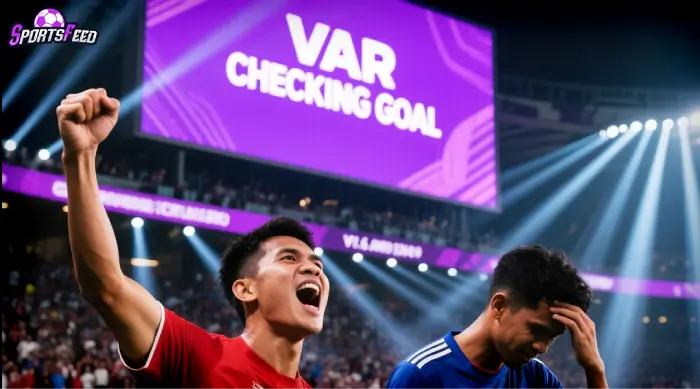
Malaysia Super League (MSL) VAR Implementation
The MSL’s 2024–25 season, running May 2024 to April 2025, marks the debut of VAR technology, approved by FIFA in April 2024. Twelve referees trained in 2023, using mobile VAR units to cover 182 matches. This boosts decision accuracy but faces criticism for inconsistent application, per X posts, requiring further refinement for the 2025–26 season.
Financial Fair Play (FFP) Adoption
The MFL introduced Financial Fair Play for 2024–25, monitoring club salaries and spending to ensure sustainability. Approved in March 2024, FFP aligns with AFC guidelines, with a 2025–26 workshop planned to enforce revenue and expenditure rules, strengthening club stability amid RM70M sponsorships.
League Expansion and Team Changes
The 2025–26 MSL expands to 14 teams, with Melaka and Immigration promoted from the A1 Semi-Pro League, replacing Kedah Darul Aman and Perak, ejected for financial issues. Brunei’s DPMM FC joins as an invited club, boosting regional competition, with a 15-player foreign quota.
Notable Clubs in the Malaysia Football League

The Malaysia Super League (MSL) showcases clubs with rich histories and passionate fanbases, driving the nation’s football legacy. Johor Darul Ta’zim, Selangor FC, and Terengganu FC stand out for their success and influence, per MFL 2025 data.
-
Johor Darul Ta’zim FC: JDT, based in Johor Bahru, dominates the MSL with 11 consecutive titles by 2025. Known for Sultan Ibrahim Stadium and stars like Fernando Forestieri, their €17M market value and AFC Champions League runs cement their regional prominence.

-
Selangor FC: Selangor FC, from Shah Alam, is a historic giant with six MSL titles and 33 Malaysia Cups. Playing at MBPJ Stadium, their €5.5M squad, led by Safuwan Baharudin, thrives under coach Nidzam Adzha in 2025.
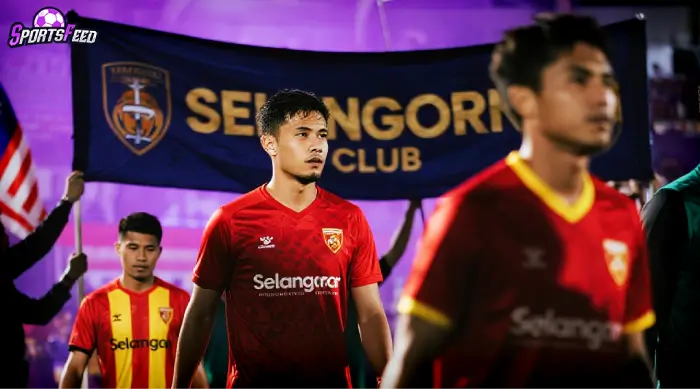
-
Terengganu FC: Terengganu FC, based in Kuala Terengganu, boasts four Malaysia Cups and a 2023 MSL runner-up finish. With a €4.8M squad at Sultan Mizan Stadium, coach Tomislav Steinbrückner’s attacking style makes them 2025 title contenders.
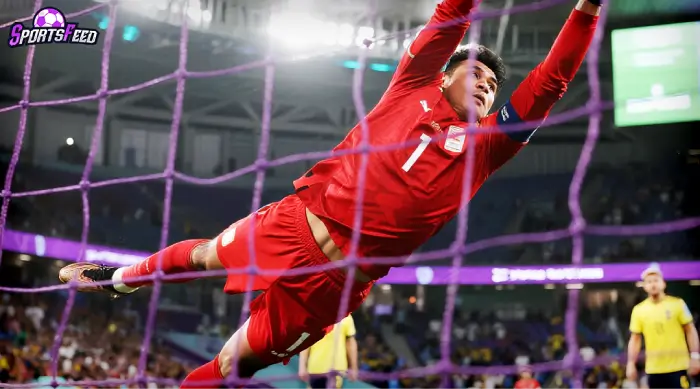
Market Value Comparison
The MSL’s top clubs vary in squad value, reflecting investment and ambition. Johor Darul Ta’zim leads, while Selangor, Terengganu, Sabah, and Penang compete with strategic recruitment, per Transfermarkt 2025 data. Below is a comparison of their squad metrics.
|
Club |
Squad Size |
Average Age |
Foreign Players |
Total Market Value |
|
Johor Darul Ta’zim |
33 |
28.5 |
9 |
€17.0M |
|
Selangor FC |
27 |
26.8 |
6 |
€5.5M |
|
Terengganu FC |
28 |
27.2 |
5 |
€4.8M |
|
Sabah FC |
30 |
27.9 |
7 |
€4.2M |
|
Penang FC |
29 |
26.5 |
6 |
€3.9M |
Current Season Highlights in the Malaysia Football League
The 2024–25 Malaysia Super League (MSL) marked a historic shift with a two-year schedule and the introduction of VAR technology, enhancing fairness. Johor Darul Ta’zim clinched their 11th title, while the 2025–26 season sees 14 teams, including newcomers Melaka and Immigration, per MFL.
League Standings
Johor Darul Ta’zim dominated the 2024–25 MSL, finishing unbeaten with 70 points, followed by Selangor FC (52 points) and Sabah FC (40 points), per Sofascore. The 2025–26 season, starting August, introduces DPMM FC, with early standings pending.
Top Goalscorers

The 2024–25 MSL season showcased prolific strikers, with Bérgson leading the charts. Below is a table of the top goalscorers, highlighting their contributions to their clubs, based on available 2024–25 data.
|
Player |
Goals |
Club |
Position |
|
Bérgson |
26 |
Johor Darul Ta’zim |
Striker |
|
Ifedayo Olusegun |
16 |
PDRM FC |
Striker |
|
Kpah Sherman |
14 |
Sri Pahang FC |
Striker |
|
Kipré Tchétché |
12 |
Kuala Lumpur City FC |
Striker |
|
Paulo Josué |
11 |
Kuala Lumpur City FC |
Midfielder |
Challenges of the Malaysia Football League 2025
The Malaysia Football League (MFL) in 2025 faces multifaceted challenges, from financial instability to infrastructure gaps. Addressing these issues is critical for growth, competitiveness, and fan engagement in the 2025–26 season, per MFL insights.
Current Challenges
-
Financial Sustainability: Clubs like Kedah and Perak face financial woes, with unpaid salaries leading to withdrawals, per X posts. Reliance on state funding and sponsors hampers sustainability, necessitating MFL’s Financial Fair Play enforcement.
-
Infrastructure Development: Aging stadiums and inadequate training facilities limit growth. Only JDT and Selangor boast modern setups, while others struggle with subpar pitches, hindering player development and fan experience, per MFL.
-
Youth Development: The scrapped MFL Cup and clubs like Kelantan skipping youth competitions threaten talent pipelines. Inconsistent academy funding and coaching quality stall progress, despite initiatives like FAM SupaRimau, per MFL.
-
International Competitiveness: MSL clubs lag in AFC competitions, with only JDT excelling. Limited investment and talent retention weaken global standing, requiring better coaching and exposure, per UEFA and MFL 2025 data.
-
Attendance Figures: Declining fan interest, with average MSL attendance below 5,000, stems from JDT’s dominance and poor scheduling. Enhanced marketing and fan engagement are needed to boost crowds, per Sofascore.
Development Initiatives
-
VAR Implementation: Introduced in 2024–25, VAR faces inconsistent application and fan criticism. Mobile units cover six weekly matches, but referee training gaps persist, requiring refinement for fairness, per Malay Mail.
-
Calendar Restructuring: The 2024–25 two-year schedule disrupted momentum, with long match gaps. The 2025–26 season’s August–April format aims for consistency but needs better fixture planning, per Soccerway.
-
Youth Academies: FAM’s SupaRimau Charter pushes academy standardization, but funding shortages and uneven coaching quality limit impact. Only JDT’s academy thrives, leaving smaller clubs struggling, per FAM.
-
Foreign Player Regulations: The 2025–26 quota allows 15 foreign players per club, but smaller teams can’t afford quality imports, widening gaps with JDT, per CNA. Balanced rules are needed for fairness.
-
Digital Engagement: Low digital presence hampers fan growth. Clubs lack fan databases and modern apps, unlike European models. Investment in streaming and social media is crucial, per Selangor Journal.

Fan Culture and Regional Rivalries in Malaysian Football
Malaysian football thrives on passionate fan culture and fierce regional rivalries, creating electric match-day atmospheres. From vibrant supporter groups to historic derbies, these elements, rooted in MFL 2024–25 data, define the sport’s heart and identity.
Supporter Groups and Match Day Experience
Groups like JDT’s Boys of Straits and Selangor’s UltraSel fuel vibrant match-day energy with chants, tifos, and pyrotechnics. Stadiums buzz with local food stalls and pre-match festivities, drawing 5,000–20,000 fans, per Sofascore.
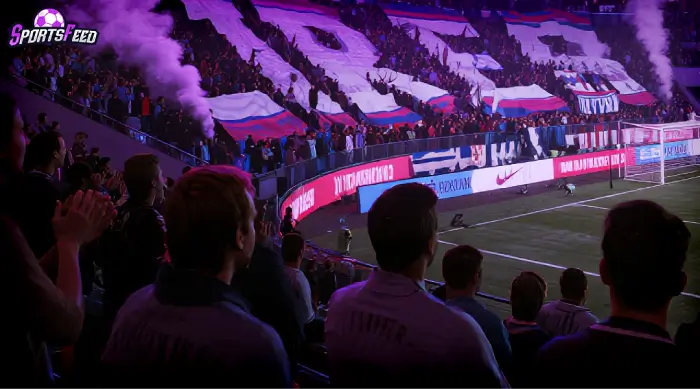
Notable Rivalries
Malaysian football’s rivalries, steeped in regional pride, ignite intense battles. The Southern Rivalry, Klang Valley Rivalry, and Northern Rivalry captivate fans, with matches like JDT vs. Pahang drawing massive crowds and media attention, per MFL.
The Southern Rivalry
Teams: JDT vs. Pahang
JDT and Sri Pahang FC’s rivalry, fueled by southern pride, sees packed Sultan Ibrahim Stadium clashes. JDT’s 2024 3-0 win intensified tensions, with fans’ tifos and chants amplifying the fierce competition, per X posts.
Klang Valley Rivalry
Teams: Selangor FC vs. Kuala Lumpur FC
Selangor and Kuala Lumpur FC’s urban derby, rooted in Klang Valley’s heart, draws 15,000 fans. Selangor’s 2024 2-1 victory sparked heated debates on X, showcasing intense local pride and rivalry.
Northern Rivalry
Teams: Penang FC vs. Kedah Darul Aman FC
Penang and Kedah’s northern clash, fueled by regional loyalty, packs City Stadium. Kedah’s 2024 1-0 win, per Sofascore, heightened tensions, with fans’ vibrant displays and chants defining this historic rivalry.
Malaysia Football League in the Southeast Asian Context
The Malaysia Super League (MSL) holds a prominent place in Southeast Asian football, competing with Thai League 1, Liga 1, Singapore Premier League, and V. League 1, driven by passionate fanbases and growing professionalism.
|
League |
Country |
Teams |
AFC Champions League Spots |
Notable Achievements |
|
Malaysia Super League |
Malaysia |
14 |
1 Elite, 2 ACL Two |
JDT’s 11 titles, 2015 AFC Cup, 2022 ACL knockout stage |
|
Thai League 1 |
Thailand |
16 |
2 Elite, 2 ACL Two |
Buriram’s 9 titles, 2018 ACL quarter-finals |
|
Liga 1 |
Indonesia |
18 |
1 Elite, 2 ACL Two |
Persija’s 2018 AFC Cup semi-final, Bali United’s rise |
|
Singapore Premier League |
Singapore |
9 |
0 Elite, 1 ACL Two |
Lion City Sailors’ 2021 title, Tampines’ AFC Cup runs |
|
V. League 1 |
Vietnam |
14 |
1 Elite, 2 ACL Two |
Hanoi FC’s 2019 AFC Cup semi-final, consistent titles |
Competitive Landscape
The MSL’s regional standing is bolstered by JDT’s success but challenged by financial and infrastructure disparities. Below are key strengths and challenges shaping its Southeast Asian context.
|
Strengths |
Challenges |
|
JDT’s dominance elevates MSL’s AFC profile |
Financial instability for smaller clubs |
|
Strong sponsorships (RM70M in 2016) |
Aging stadiums and uneven infrastructure |
|
Passionate fanbase, especially for rivalries |
|
|
Growing professionalism with VAR, FFP adoption |
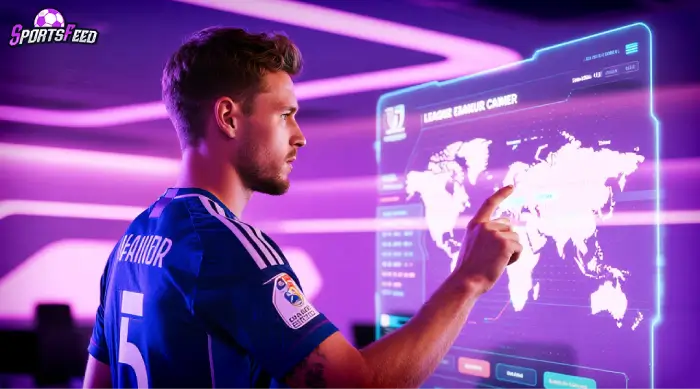
The Future of the Malaysia Football League
The MFL is on the cusp of transformation. Technological advances like VAR, structural reforms, and grassroots investments show promise. However, sustainable growth will require better commercial strategies, infrastructure investment, and stronger international performances. With fan passion still strong and clubs like JDT setting benchmarks, Malaysian football is poised for a more competitive, professional, and globally respected future.
FAQ
- What is the Malaysia Super League?
The Malaysia Super League (MSL) is Malaysia’s premier professional football league, launched in 2004. Managed by the Malaysian Football League, it showcases top clubs, replacing the Liga Perdana 1, and is a key part of Malaysia’s sports culture.
- How many teams compete in the Malaysia Super League?
The 2025–26 Malaysia Super League features 14 teams, including 12 from the previous season and two promoted from the Malaysia A1 Semi-Pro League, competing in a round-robin format.
- When does the Malaysia Super League season take place?
The 2025–26 Malaysia Super League season runs from August 2025 to April 2026, following a two-year schedule, with matches played in a home-and-away format over several months.
- Who are the most successful clubs in MSL history?
Johor Darul Ta’zim dominates with 11 titles, followed by Selangor, Kedah Darul Aman, Kelantan, Sri Pahang, Perlis, Negeri Sembilan, and LionsXII, each with fewer championships.
- How does promotion and relegation work in the MSL?
The MSL uses promotion and relegation with the Malaysia Premier League. The bottom two MSL teams are relegated, replaced by the top two Premier League teams, though this was paused in 2022.
- Can foreign players play in the Malaysia Super League?
Yes, MSL clubs can register 15 foreign players (four open, one Asian, two ASEAN). Six can be designated per match, requiring an International Transfer Certificate.
- Where can I watch the Malaysia Super League matches?
MSL matches are broadcast on Unifi TV and RTM, with streaming on platforms like iflix. Check the Malaysian Football League website for live schedules and options.
- Which stadiums are used in the Malaysia Super League?
MSL stadiums include Sultan Ibrahim Stadium (Johor Darul Ta’zim), Likas Stadium (Sabah FC), and Temerloh Mini Stadium (Sri Pahang), varying by team for the 2025–26 season.
- Are there youth or development teams linked to the MSL clubs?
Yes, MSL clubs maintain youth and development teams, supported by the MFL’s Reserve League, which nurtures young talent for future integration into senior squads.
- How can I buy tickets to an MSL match?
Tickets for MSL matches are available through club websites, the Malaysian Football League site, or platforms like Ticketmaster Malaysia, with schedules on MFL’s official channels.
